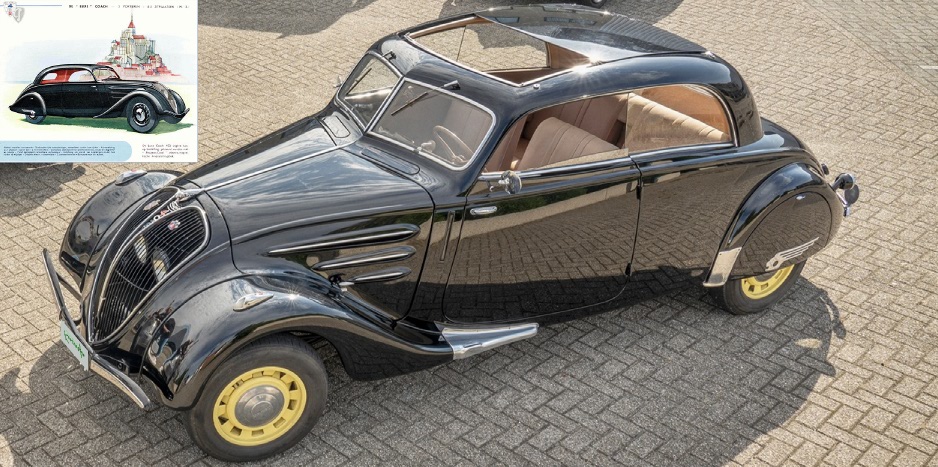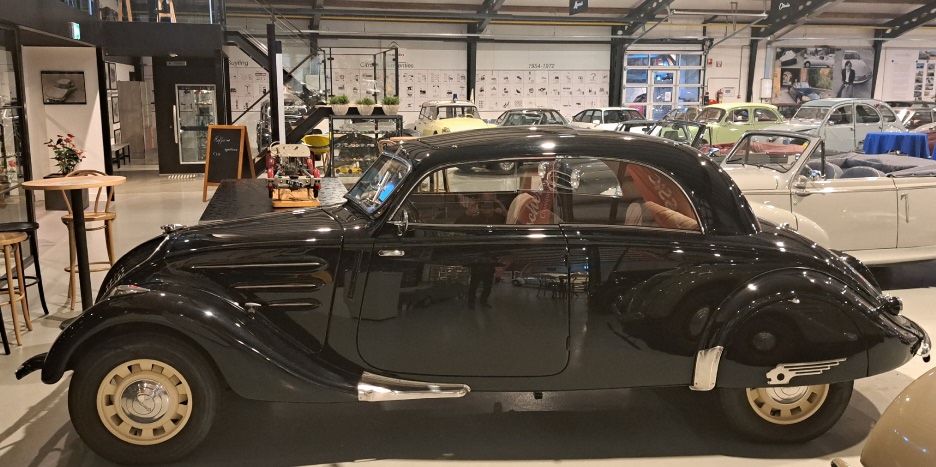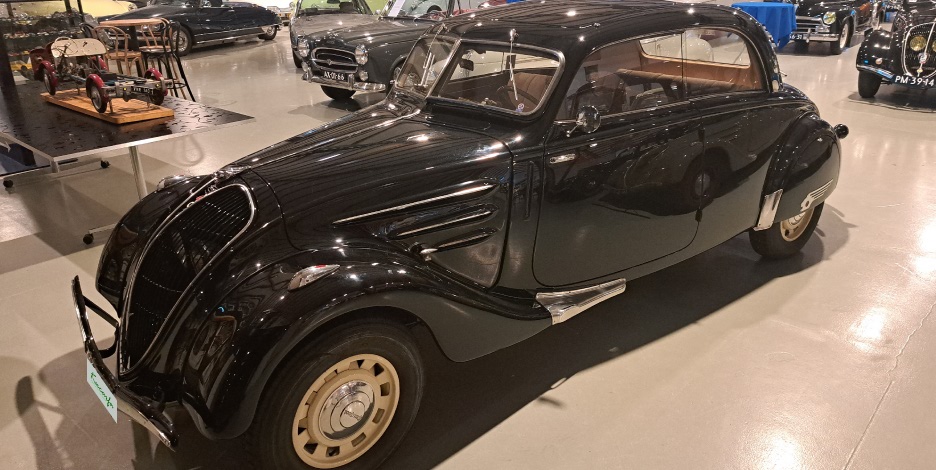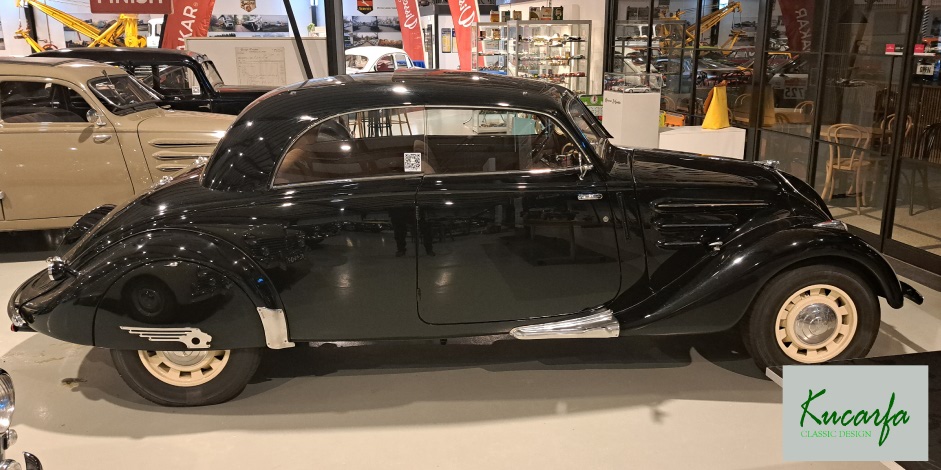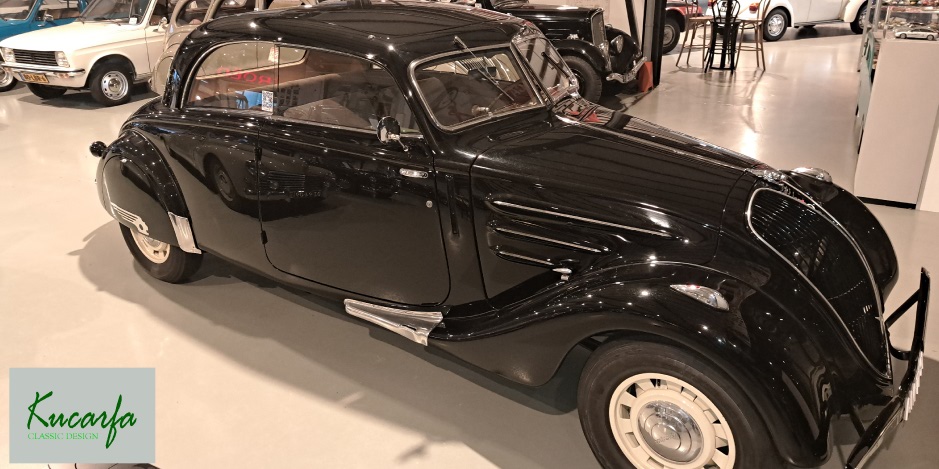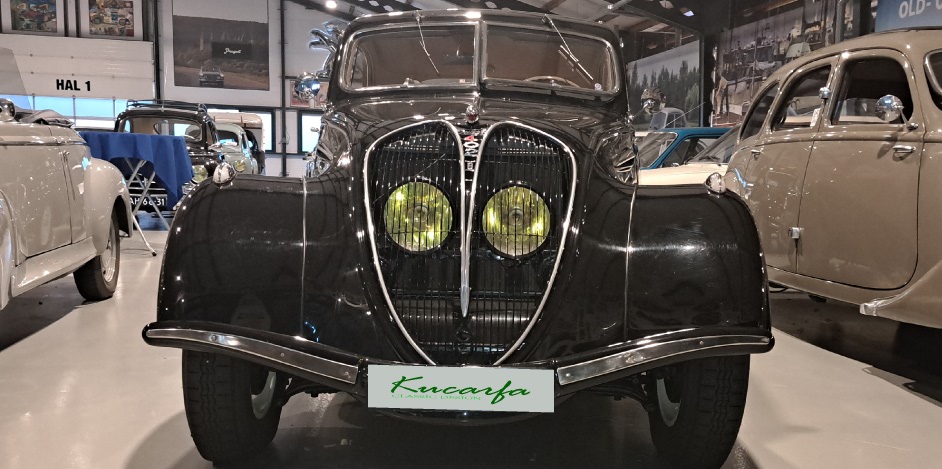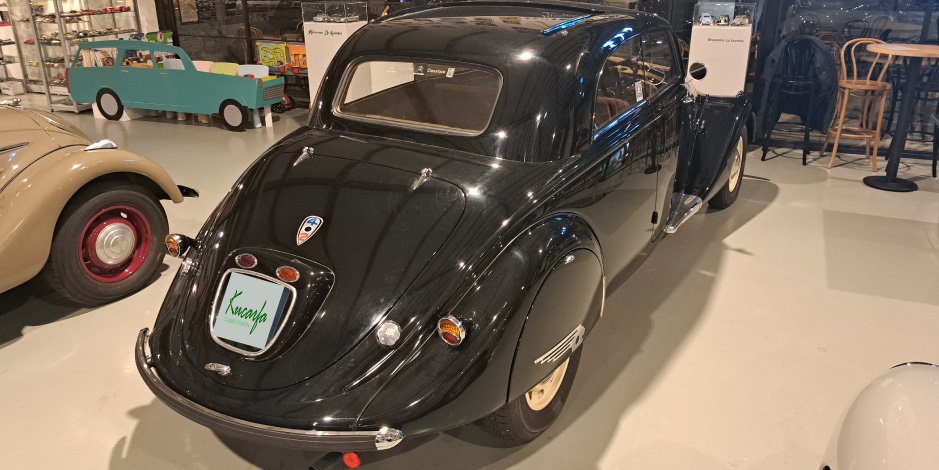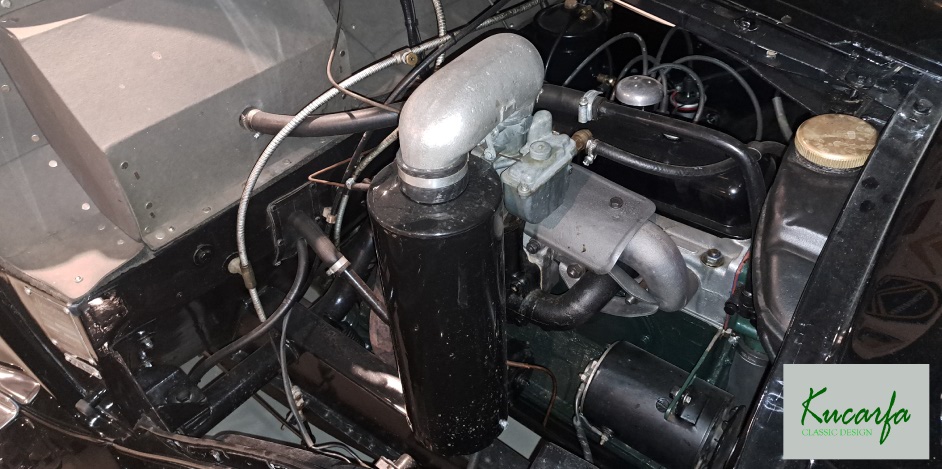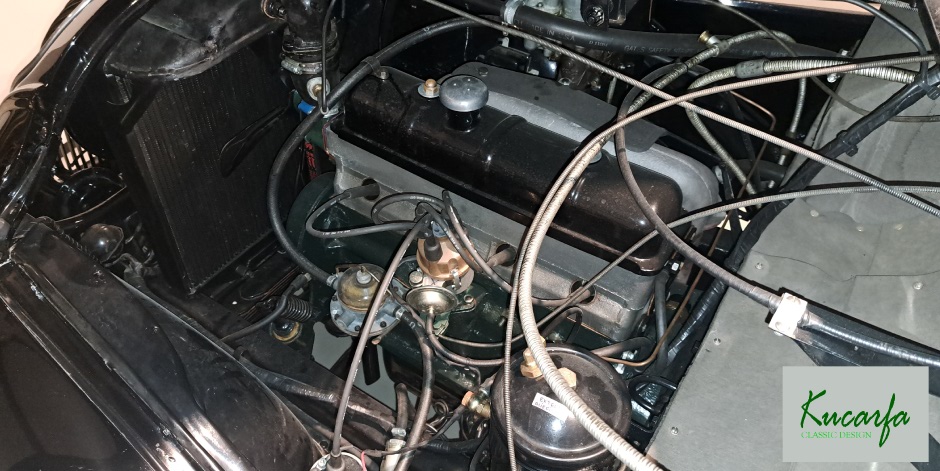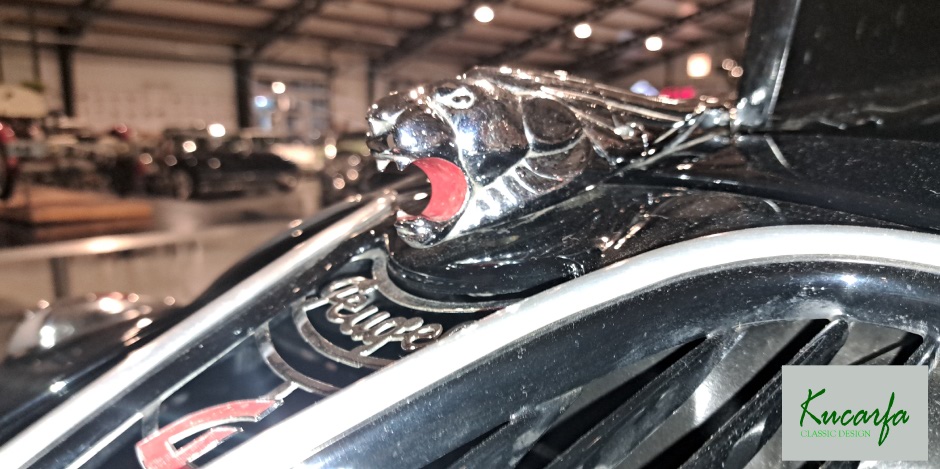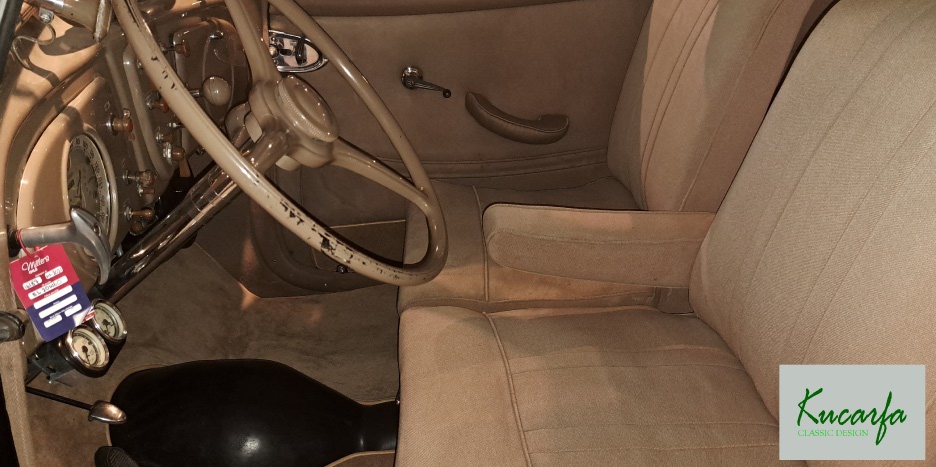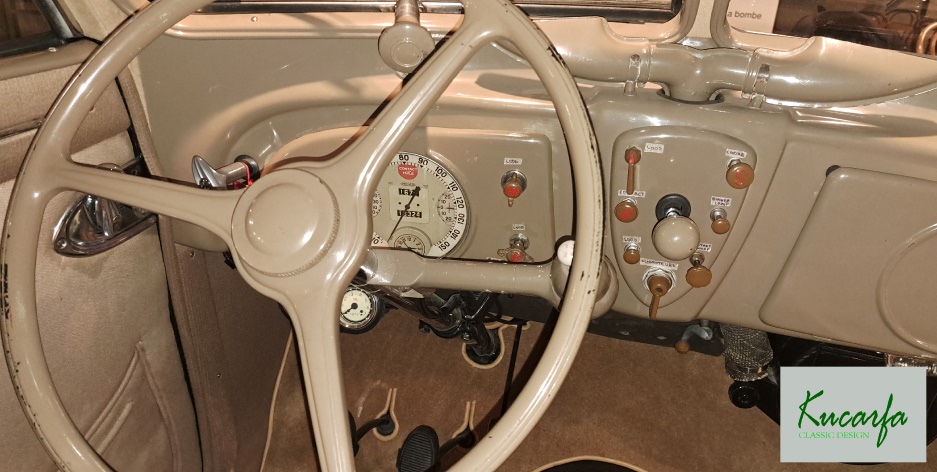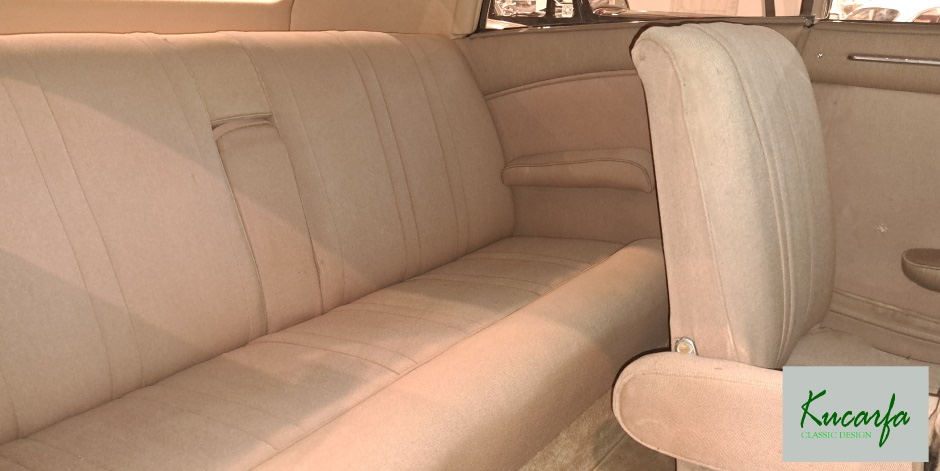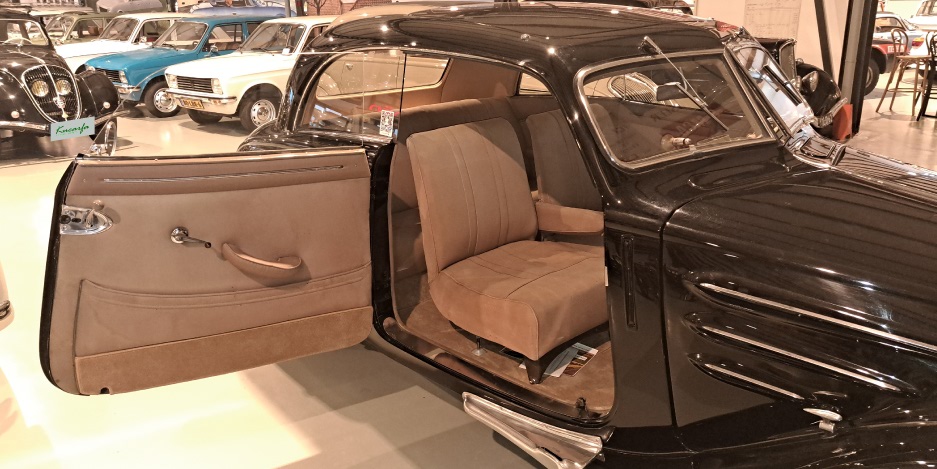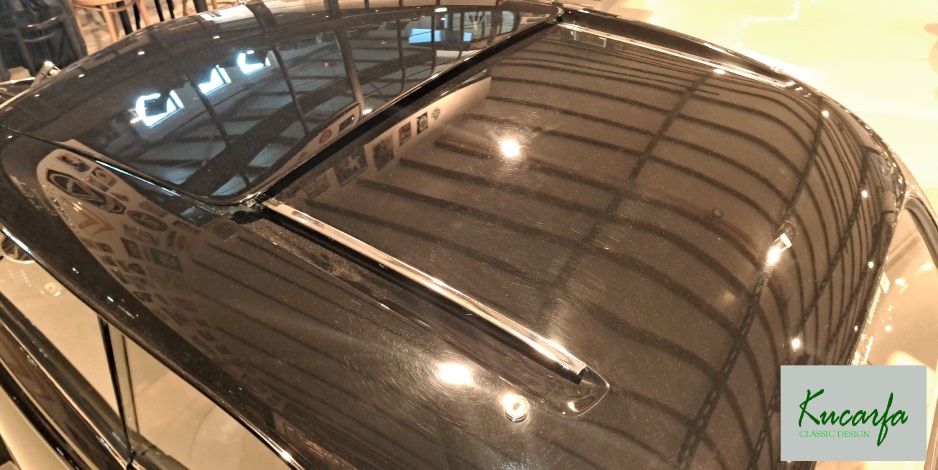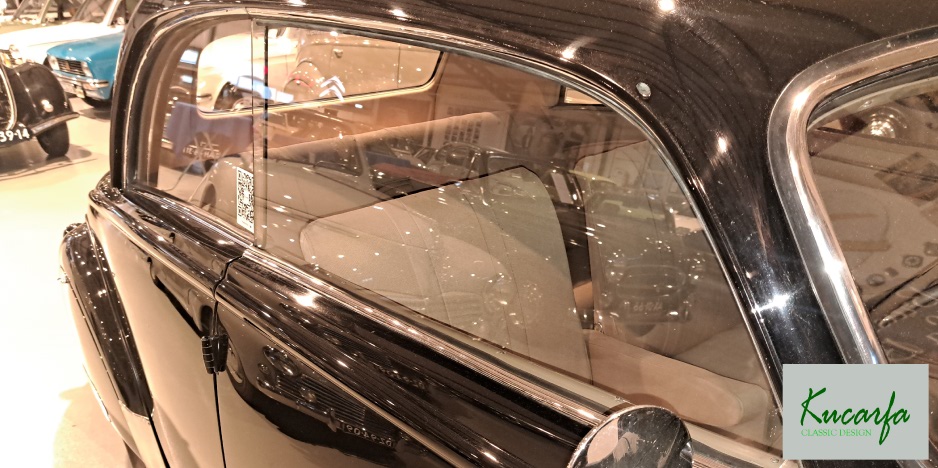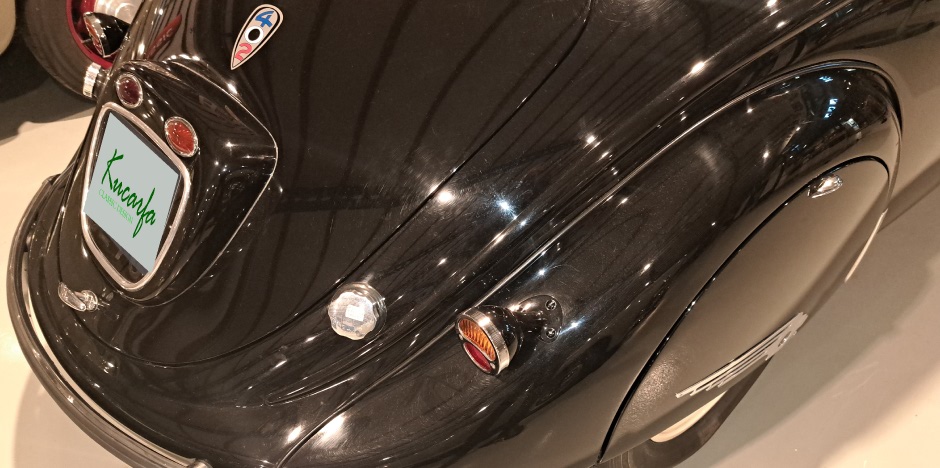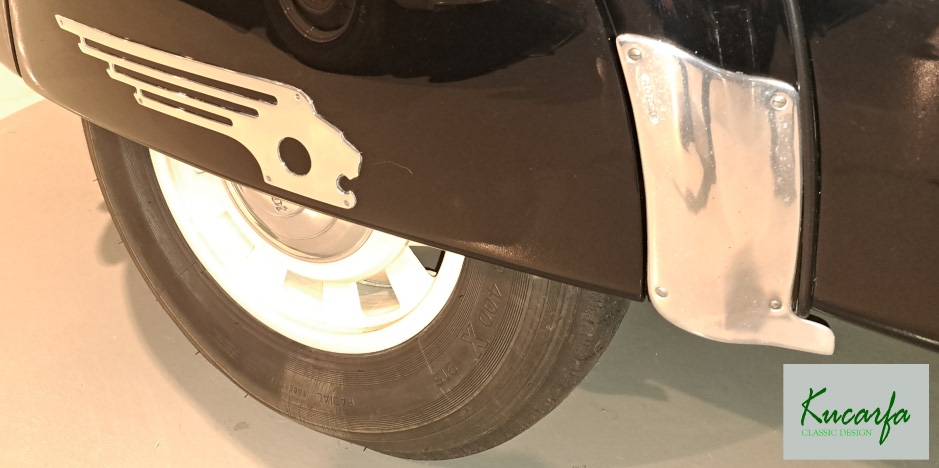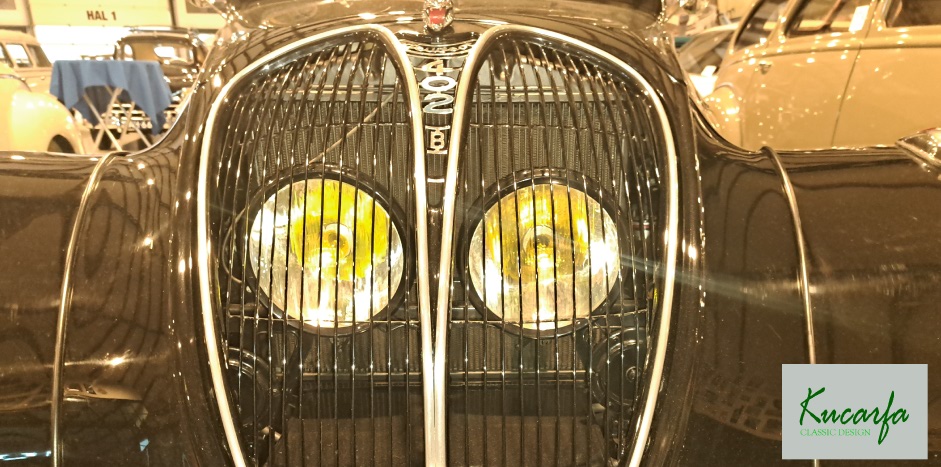Replacing the 401, the 402 was presented at the Paris Motor Show in October 1935. Its bodywork, available in several versions, with its fluid and elegant lines, was called the “Sochaux spindle line” and was to be used on the Peugeot cars of the second generation.
Playing with chassis, engines and bodywork, Peugeot’s studies created a sporty and stylish passenger car. With the front styling and engine of the 402, the interior of the 202 and a lighter chassis, the marque au lion was preparing to produce its first GT. The design studies for the monograms named it the 402 Grand Tourisme. The name 402 B Légère was preferred for its commercial launch.
Three years after the introduction of the 402, a second generation was presented at the 1938 Paris show. Chrysler had stopped making Airflows the year before, but Peugeot pressed on with its interpretation of the futuristic design, modifying it only a little bit and calling it the 402 B.
The grille was more rounded with painted bars in place of chromed ones. On sedans, a new "bustleback" trunk replaced the former flush-fitting deck lid and exposed spare tire. Thanks to a longer stroke, the engine now displaced 2.1 liters and made 63 horsepower. Removable cylinder liners were another of the engine's new features. Transmission choices remained the same.
Technical data
|
Peugeot 402 BE Coach
|
|
| Year |
1939
|
| Engine |
Petrol 4 cylinder in line
|
| Gearbox |
semi-automatic Cotal transmission
|
| Displacement |
2.142 cc
|
| Max. Power |
63 pk at 4.000 rpm
|
| Topspeed |
125 km/h
|
| L X B X H |
459 X 157 X 160 cm
|
| Weight |
1.430 kg
|
| Production number 402 B Coach |
2.280
|
A big metal sunroof was newly available -- at no additional cost. New body types included the first hardtop coupe in France, the 402 B Coach. It was the solid-roof companion to the "Coach Décapotable," which featured a folding fabric top over fixed window frames.
Production of first-generation 402s came to 33.815 cars between 1935 and 1938; another 6.718 long-wheelbase models and 2.038 taxis were manufactured. (By 1939, nearly 25 percent of Paris taxis were 402s.) Factory output of 402 Bs until 1940 came to 11.620. Long-wheelbase 402 Bs accounted for 4.512 assemblies. In the first generation, 10 percent were ordered with the Cotal four-speed transmission. Twenty percent of 402 B buyers chose it.
The 402 B is a two-door Coach version. The name Coach was given to the coupe by Peugeot. The car has styleless door windows, a steel sliding roof, a Cotal gearbox and Michelin Pilote wheels. Before the Second World War, many gearboxes were not synchronized, so you had to disengage twice (double-de-clutching) and if you did not master this properly, a violently creaking gearbox followed. The Cotal gearbox has a planetary gear system, like an automatic transmission. However, it lacks a torque converter and has a regular dry-plate clutch. That clutch is actually only necessary to drive away smoothly. Shifting takes place with the small lever under the steering wheel, which controls solenoids (electromagnetic coils) in the gearbox, which ensure that the correct gear is selected. The system resembles an English Wilson pre-selector gearbox, but it only shifts when the clutch pedal is pressed, the Cotal shifts immediately. The Michelin Pilote wheels are designed for greater suspension comfort, the different parts of the rim can move relative to each other and thus absorb shocks.
This Peugeot 402 BE Coach from 1939 is a very rare version. 58.741 units of the Peugeot 402 were built in the period 1935-1941. Only 2.280 of this coach. It is said that there are still five left: this one, one in the Peugeot museum and about 3 more on the planet. This version is special because of the very large sliding roof and the four-speed semi-automatic transmission from Boite Cotal. On the other hand, many more of the Eclips, the first convertible with a pneumatic steel roof, were built: approximately 3.025 units. Many 402s did not survive the war. The fact that this copy has been preserved is unique. This Coach was completely restored at a restoration company in France in the period 2009-2010.
